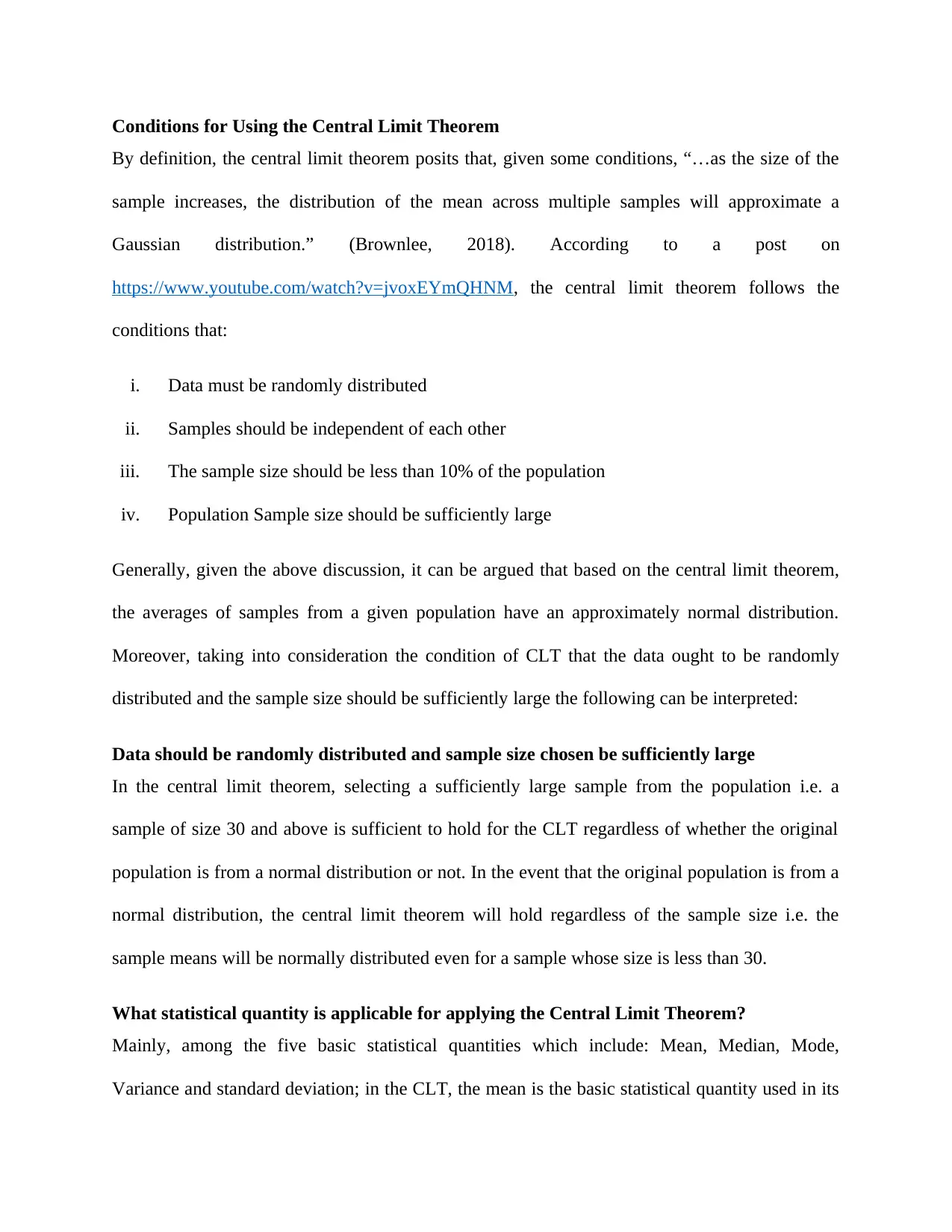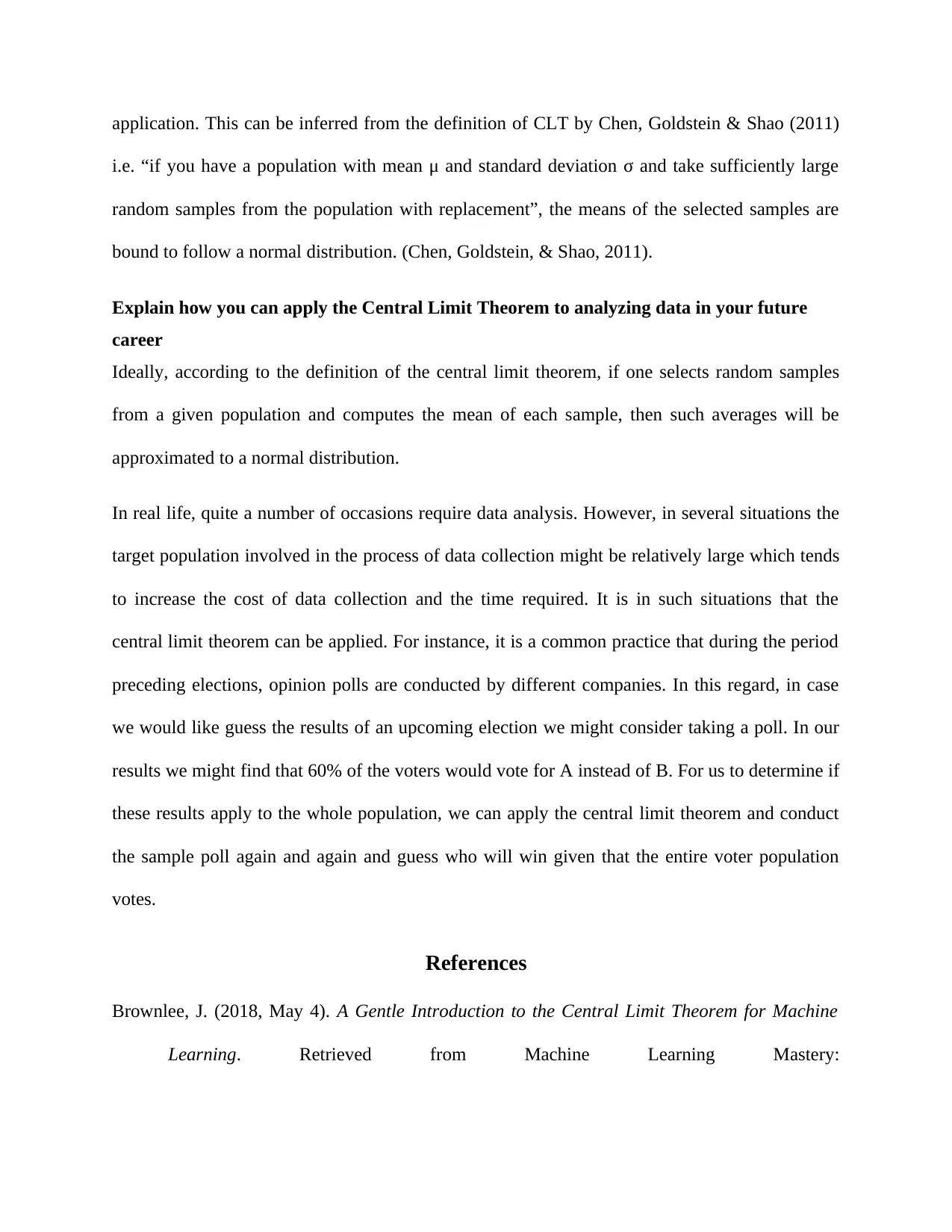Discussion on the Central Limit Theorem: Conditions and Applications
VerifiedAdded on 2022/11/27
|3
|672
|172
Discussion Board Post
AI Summary
This discussion post delves into the Central Limit Theorem (CLT), outlining the conditions necessary for its application, including random data distribution, independent samples, a sample size less than 10% of the population, and a sufficiently large sample size. It identifies the mean as the key statistical quantity applicable to the CLT and explains how the theorem can be used in future career for data analysis, particularly in scenarios with large populations where sampling and averaging can approximate a normal distribution. The post references external sources to support its explanations and provides a practical example of using the CLT in election opinion polls to predict outcomes based on sample data.
1 out of 3










![[object Object]](/_next/static/media/star-bottom.7253800d.svg)